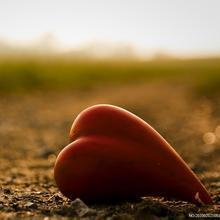Microorganisms such as algae and bacteria move in a viscous environment with extremely low Reynolds ($Re$), where the viscous drag dominates the inertial forces. They have adapted to this environment by developing specialized features such as whole-body deformations and flexible structures such as flagella (with various shapes, sizes, and numbers) that break the symmetry during the motion. In this study, we hypothesize that the changes in the flexibility of the flagella during a cycle of movement impact locomotion dynamics of flagellated locomotion. To test our hypothesis, we developed an autonomous, self-propelled robot with four flexible, multi-segmented flagella actuated together by a single DC motor. The stiffness of the flagella during the locomotion is controlled via a cable-driven mechanism attached to the center of the robot. Experimental assessments of the robot's swimming demonstrate that increasing the flexibility of the flagella during recovery stroke and reducing the flexibility during power stroke improves the swimming performance of the robot. Our results give insight into how these microorganisms manipulate their biological features to propel themselves in low viscous media and are of great interest to biomedical and research applications.
翻译:微生物(如藻类和细菌)在一个黏滞环境中运动,雷诺数极低($Re$),黏滞阻力占优势。它们通过开发特殊的功能(如全身变形)和灵活的结构(如不同形状、大小和数量的鞭毛)适应了这种环境,这些结构扰乱了它们的运动对称性。在本研究中,我们假设鞭毛在运动周期中的刚度变化影响了鞭毛游动的运动动力学。为了验证我们的假设,我们开发了一个自主、自驱动的机器人,它有四根柔性的、多段的鞭毛,由一个DC电机共同驱动。鞭毛在运动过程中的刚度通过连接在机器人中心的电缆驱动机构进行控制。实验评估表明,增加鞭毛复原阶段的柔性,并降低动力阶段的柔性,能够提高机器人的游泳性能。我们的研究结果揭示了微生物如何利用其生物学特征在低黏性介质中推进自身,并对生物医学和研究应用具有重要意义。


